Monstera Deliciosa
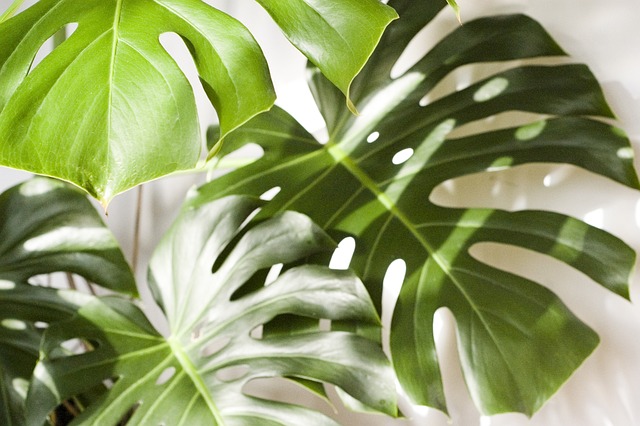
There are different kinds of Monstera Deliciosas, loosely categorized as small form and large form. The small form can be recognised by the more oval shape of their leaves, while the large form generally have larger and more rounder leaves. The small form can however produce quite large leaves as well the older they get and with the right care. So what is the right care? They want a lot of light but can also be sensitive to direct sunlight, so one might need to test how sensitive ones own plant is. The best placement is therefore in indirect sunlight to maximize light, but at the same time avoid burnt leaves.
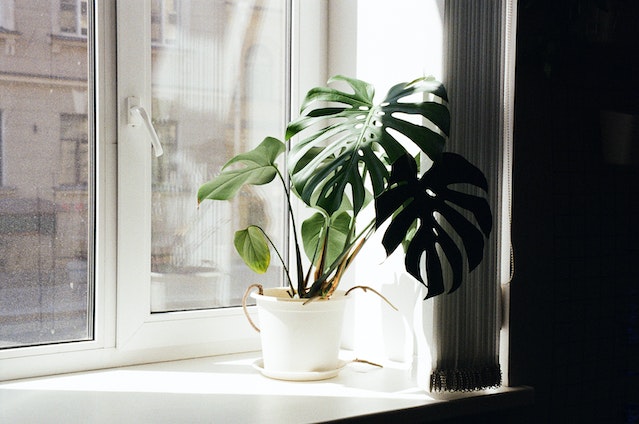
If placed in a spot with much light, let's say by a highly sunlit window, one can usually see it sprouting new leaves quicker than if it was placed further in the room. If your only goal is to have a beautiful green plant, then one can place it wherever it seems fit. They manage just fine with moderate lighting (they do however require light, so don't place them in a very dark room). But if one wants a big and eye-catching plant, then a highly lit area is the way to go! Another reason why monsteras are very popular plants is that they are easy to water. They do require a lot of water, but not too often. One should always let the soil dry up between watering sessions which, depending on the amount of light they get, can vary from once to twice a month. The older monsteras get the more "ribs" and holes the leaves get, making them look very tropical and wild. A young plant tend to have more whole and heart shaped leaves, but they too will get their signature shape quite quickly if given the prefered care. As these are tropical plants they like high humidity. It is advised to spray the leaves with water regularly, alternatively invest in a humidifier as that would create a more “authentic” climate.
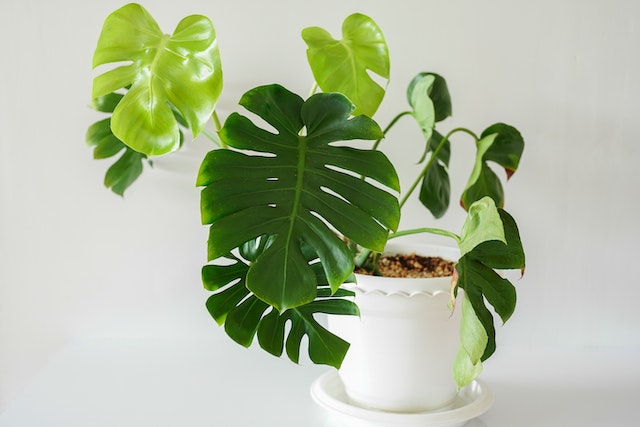
If one wants to take a cutting from a monstera in order to produce a whole new plant, called propagation, one must find the right space between the nodes to cut. One will find the node by looking at the stem of the monstera and locating the newest aerial root. These are the long roots growing along the stems that the plant use to grab on to trees in the wild. When the node has been located, one must cut underneath it in order to ensure that the new plant has a starting root. If just the leaf is cut off without a root and stem, it will not be able to grow. Place the newly cut cutting in a vase with water, making sure the root is submerged. After a couple of months, depending on what time of the year it is, one can plant the new monstera in nutrient poor soil at first and care for it the same way as the original plant. Once it has established itself to the new environment one can start watering with nutrients. The reason to not add nutrients from the start is that it can become too much for the new roots that they become overwhelmed and rot, which will kill the new plant.
Variegated Monstera Deliciosas
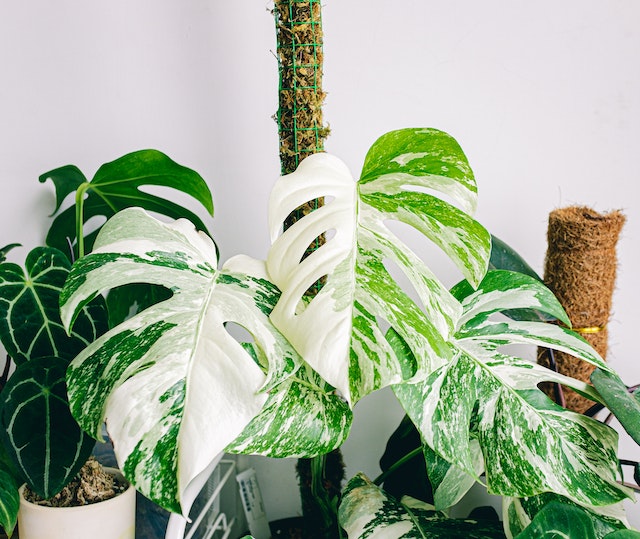
The Variegated Monstera is another kind of monstera that comes from the one above originally. It differs from the “regular” monstera in the way that it has white or yellow sections, which is caused by a cell mutation that removes the chlorophyll of the plant. These sections can result in a variety of patterns such as splotches, stripes, dots, blocks and even entire leaves. The lack of chlorophyll in the leaves are what make them difficult as they need extra care in order to not turn brown and die very quickly. These plants are seldom selled in regular stores (sometimes by mistake though if the variegation is so small that it could be mistaked as a "beauty mark") as they are technically a "faulty" plant. This is what make them so expensive, the inbalance of the supply and demand. One usually buys just cuttings of these plants by private individuals either in different Facebook groups or auctioning sites, also some online stores have started selling small plants of these if one would like to aquire a somewhat unique plant for themselves.
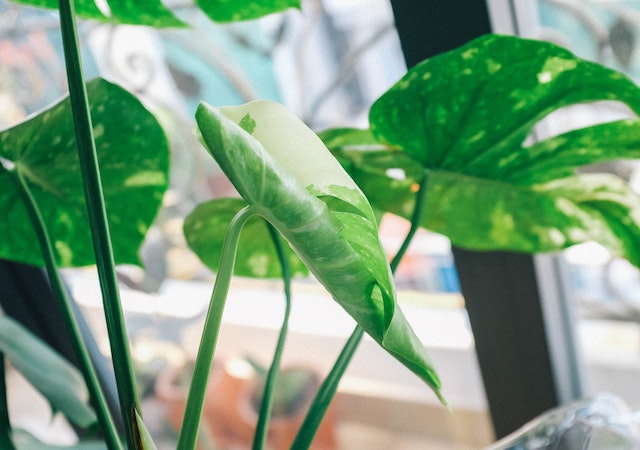
The variegated monsteras can be tricky to care for as they seem to work against themselves. Due to it being a tropical plant as well as it having less chlorophyll than a “regular” monstera, they require much light. But, the white parts of the leaves are much more sensitive to direct light causing them to get burned more easily. So, although a plant with an entirely white leaf might sound really cool, it can be a literal nightmare to care for. This is one of the reasons why it is not recommended as a beginners plant as it can be a lot of money wasted down the drain if one does not know the proper care. So what to do? It can be recommended to have a specific lamp for plants aimed at it as they will not burn the leaves, while simultaneously providing sufficient lighting. Keeping the environment of the room at a higher humidity level is also a good idea. One can spray the leaves with water using a regular spray bottle, but one has to be careful that water does not collect in the new leaf if one is growing out, as this will cause it to rot before it even has a chance to grow. This is where the humidifier comes in. It will keep the air humid without it being harmful to the plant.
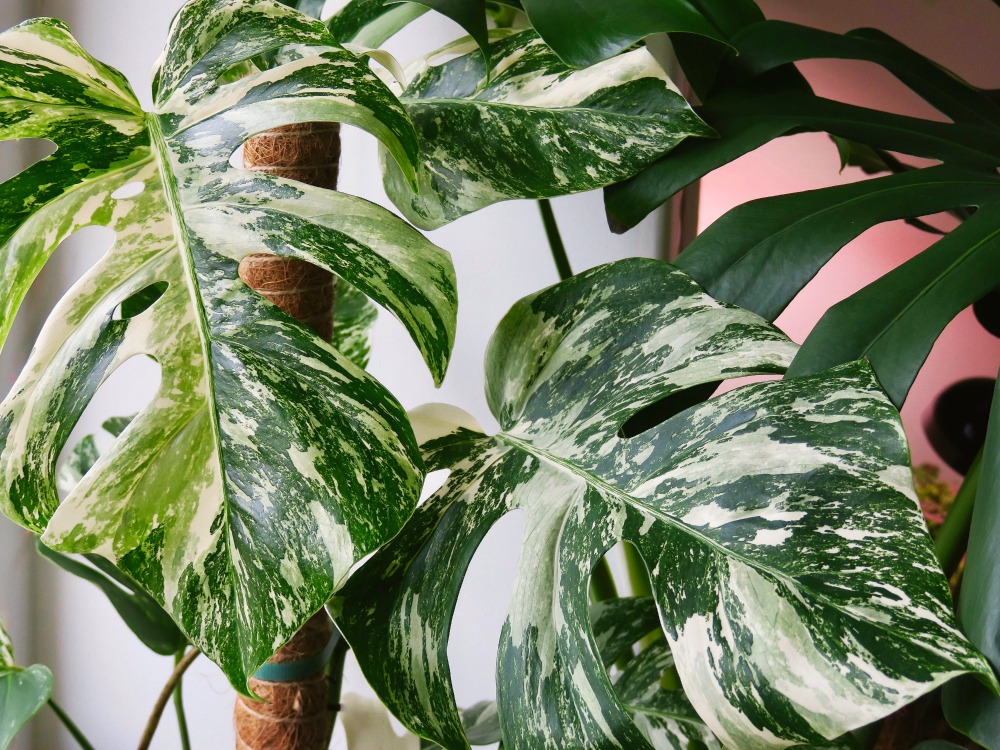
Unlike the “regular” monstera, where the large form and small form are both pretty common, it is very difficult to attain a variegated monstera as a large form as they are even more rare. The small form variegated monsteras can go for up to ﹩300 depending on the amount of variegation they have and how big the plant is, on auction sites. The large form however can go for similar prices and even higher, for just a cutting. Some people (maybe most people) will think this is ridiculous for “just a plant”, especially since it will almost certainly not stay as beautiful forever. But for real plant enthusiasts and collectors, these plants are a dream plant or even a necessity in their collections.
Coleus
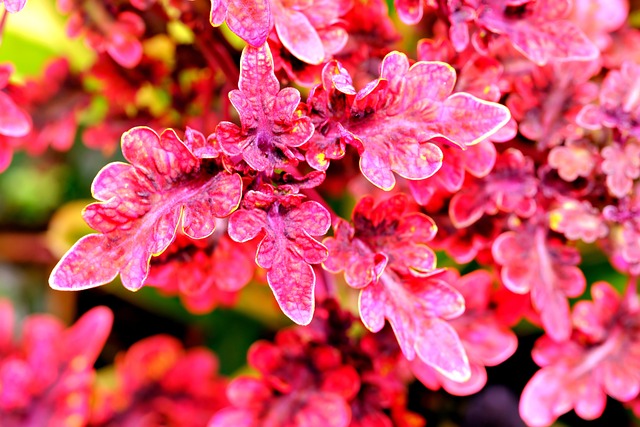
The fact that coleus plants have become such a popular plant in recent years has probably not gone unnoticed. Their immense versatility and color changing qualities make them highly collectable. If someone only likes green plants, there are about 100 different green coleuses of different shades and patterns. If someone likes bright pink there are even more different types. And the fact that one can cross pollinate different kinds to create ones own personal mix, is just an amazing bonus. As a collector or hobbyist it is easy to become slightly obsessed (speaking from experience) with these plants. It also helps that they have pretty (and sometimes funny) names. Some favorites of mine at the time are Flora, Fishnet Stockings, BigBob, Estrella and Cloud Connected. Some people claim that these plants are a "one year plant" as they usually die when winter comes, but with these tips, they can live for a couple of years at least! Intrigued? What does one have to do to take care of these plants then? Don’t worry, keep reading and you will find out.
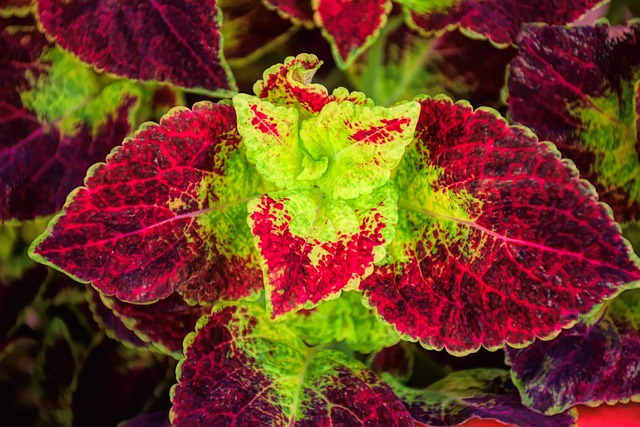
As for watering and lighting when it comes to these plants, they are pretty easy. Keep them in a well lit area, preferably without direct sunlight as they can get burnt leaves, and water them regularly with nutrients. In the summer one can give nutrients with every watering, but in the winter one should keep that to a minimum as it can be too much for the plants when they don’t get as much energy from the sun. This however, is a general rule. Certain types of coleus might require much direct sunlight in order to produce the most intense coloring it can, and therefore need much more water than another coleus with a completely different coloring. This is where coleus plants can become a bit tricky, as one has to learn how certain types of colored coleuses act under certain types of conditions. Even here certain plant lights can be beneficial as most of them need much indirect light to stay pretty and also in order to not reach for the light and become long and frail if placed in a less lit area becuase of it getting burned easily. So, the more light it gets the more big and bright it usually grows. Even these plants can benefit from a humidifier as it can make them dry out less quickly and therefore not need to be watered quite as often as otherwise. Coleuses are however a very grateful plant to keep as they will litterally slope down when it needs water, making them look like they are dying beyond help. But fret not, giving them plenty of water when this happens will 9 out of 10 times perk them up again like nothing has happened. A bit dramatic one might think, but oh well.
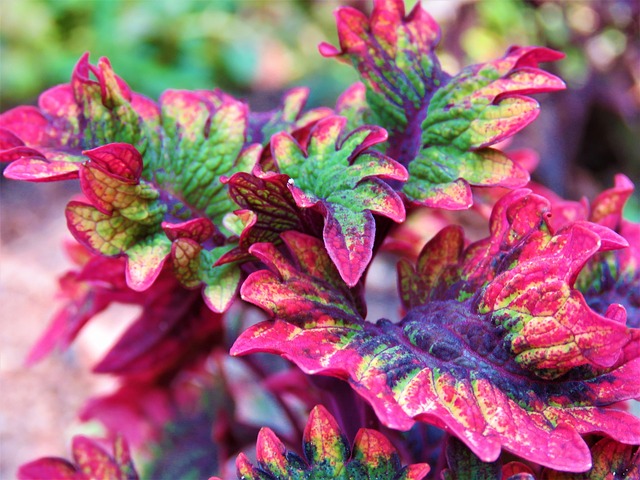
Propagation of these plants is quite easy. Cut a stem above a leaf couple (this is a general rule when cutting plants), let it dry an hour or so as to not invite rot at the fresh cut, then place in water. That is pretty much it. It is best to propagate in a dark container of some sort as this will prevent the stem from curling towards the sun. This will also trick the stem into thinking it has been planted already and will start to shoot roots quicker. It can be a good idea to cut with intention if one wants to keep a beautiful plant. A way to do this is to take cuttings when one is shaping the plant. And depending on what shape one wants the coleus to have, tall and thin, shorter and bushier, or maybe a complete massive monster that takes up an entire window, the cutting technique is pretty similar. If one wants a bushy plant, cut the stem above a leaf couple pretty close to the soil. This will save energy from the plant while sprouting new branches on the sides of the cut as it will not have an entire plant to focus on as well as produce new strong branches. After a couple of weeks or months when those branches have become long enough for another cut, make the same kind of cut where one wants the bushiness to start. Do this until the plant has reached the desired size and then just trim it when needed. If one wants to attempt to make a tree out of a coleus, one must make the first cut at the height one wants the tree crown to start, remove all leaves and branches underneath, but leave at least two levels of branches as that will help with the shaping of the crown. After that the method is the same. Cut the next branches when they have grown enough at wherever one wants to shape the crown. When one is pleased with the shape, just trim it as needed. If the goal is a massive plant, start with the bush method and then just cut at will when the desire hits.